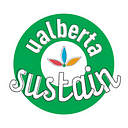UAlberta gets reducing food waste down to a science
LeanPath technology adopted by 10 campus food vendors
Food waste prevention is now even simpler thanks to a technology called LeanPath. The measurement system was created to help restaurants reduce pre- and post-consumer waste and has now become a staple technology on campuses worldwide, including our very own dining halls at the University of Alberta.
The university is the first in Western Canada to adopt the program and has seen so much waste reduction in only three months, that the program will likely continue to be used for years to come. LeanPath is active in 10 food service locations and has reduced average weekly food waste by 32 kg.
How it works: weighed, photographed and uploaded
The process isn’t much to look at and it isn’t complicated — good news for campus dining service employees who don’t have time to push a million buttons. Everything is done via an iPad and scale, and the entire process is lighting fast.
Before LeanPath, organic waste was simply tossed into a bin to be composted. Now it’s divided into categories and everything is precisely documented in real time. Waste is weighed, photographed and recorded in a cloud system. This data is logged and can be accessed at any time.
Users are alerted when too much of an item is being wasted, which in turn helps the university figure out what students eat and how much of which item to buy. Of course, says Troy Bender, the general manager for Aramark at the University of Alberta, the data changes from week to week. But overall, it helps raise questions nobody ever would have asked otherwise — like why an uneaten dish didn’t resonate with Lister students, or how much preparation needs to be done before a popular event.
LeanPath has reduced average weekly food waste by 32 kg.
LeanPath has become a vital instrument to maintaining sustainable practices at the University of Alberta and the broader community.
“What we often forget is that food waste isn’t just leftover fries and sad, uneaten broccoli. It’s carrot peels and beef fat, pineapple stems and corn husks. It’s everything that goes into food preparation and the cooking process. All those things — if not properly separated and composted — go into a landfill. And that’s a real shame,” says Bender.
LeanPath contributes to the University of Alberta’s plan to divert 90 per cent of its waste from landfill by 2020. The program also helps create a sense of community between university dining services and students, showing that the true heart of sustainability is collaboration.
“The wonderful thing is that we [Aramark and Student Support Services] really support each other, because we have the same goal: reducing waste […] and we think students are getting more savvy about their food choices because of it,” says Lorraine Huntley, the support services coordinator for Lister Hall, one of the biggest food production areas on campus.
You can also help reduce waste related to campus dining. Start bringing a reusable dish or mug to the cafeteria—and you'll save money in the process.
Find out which locations offer an eco-discount
Written by Maja Staka, a two-time communications volunteer for the Office of Sustainability.
